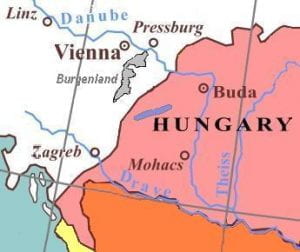Next up on our journey through the many strange cultural festivals around the world, we are stopping in Hungary for a peculiar celebration called “Busójárás”. This festival occurs during Farsang, or carnival season from February 20 to February 24 in 2020, only in the town of Mohács, which is near Hungary’s border with Croatia.
This festival has a deeply rooted culture for the celebration of two events. The first event is the celebration of the people of Mohács’ success in scaring away invading Turks. During an Ottoman occupation, the citizens had to flee the town and hide in the nearby swamps. A group of fed up citizens donned terrifying masks and stampeded the town, frightening the invading Turks away, believing that these masked men were demons and not wanting to upset the spirits of Mohács. Today, this story is still told, but the celebration is mainly held to scare away winter and welcome the arrival of spring. In my opinion, I think that the idea of this festival should be applied to State College, because I don’t know about you, but I could use some warm weather right about now.
The main feature of Busójárás is the masks. As described in the legend, the main scare tactic by the townspeople were their frightening masks. So, to pay homage to the group of men that allowed them to keep their town from Ottoman invasion, local men wear scary masks. The men dressed up in such a way is called Busós, and this term is the origin for the term Busójárás, which essentially means “Busó-walking”, demonstrating how important the history of this event is even to modern inhabitants of Mohács. Each mask is specifically tailored to each person, creating a diversity of styles and facial expressions on the large disguises. Women in more recent years began participating in these mask-wearing practices. They also wear masks, although they are not as elaborate and large as the male version, and dress in traditional clothing.
Other than the masks, this event has many joyful elements, which sometimes get rowdy. The streets are bustling with masked townspeople, folk music floating through the air, with alcohol flowing into the cups of the gleeful townspeople. It may sound like an exaggerated Halloween party to anyone who lives in the United States, but it is actually very culturally significant, demonstrated by the fact that in 2009, the festival gained a place on UNESCO’s Representative List of the Intangible Cultural Heritage of Humanity. When thinking of festivities other than Halloween to a certain extent, no concurrent festivals come to mind when trying to think of a similar event here in the United States.
The festivities usually last for around one week stretching from a Thursday in late February to Mardi Gras. The largest part of the celebration besides the massive parades throughout the streets is on the Sunday (Farsang Sunday), and the festivals end on Tuesday concludes at a large bonfire lit in the main square, where a man made out of straw is burned (Burial of Farsang).
Although this festival is free, and it is often very hard to avoid becoming engulfed into the festival, it is extremely important to make reservations ahead of time for places to stay on your visit due to the influx of people wanting to experience this bizarre celebration.
As we enter February and rapidly approach the twentieth, get your most terrifying masks ready and join the citizens of Mohács in scaring this cold winter away and ushering in the spring.




The festival sounds like an great experience! I find the masks particularly interesting as I know that many Chinese celebrations utilize various masks as well, particularly near the Lunar New Year.
I agree that we could use our own Busójárás right about now. This is a very interesting festival that kind of reminds me of our grandhog’s day.
I support anyone who is trying to scare away Winter — I am not the biggest fan! Initially, I misread your blog and thought that people celebrated by leaving town and hiding in nearby swamps, which I quickly realized was not the reality.
Wow, this sounds like a really interesting festival.
I love the history behind this tradition and how people still celebrate and honor the people that saved their country from invasion. The masks look so beautiful and articulate as well. I still can’t believe that there are so many holidays and celebrations that I know nothing about!